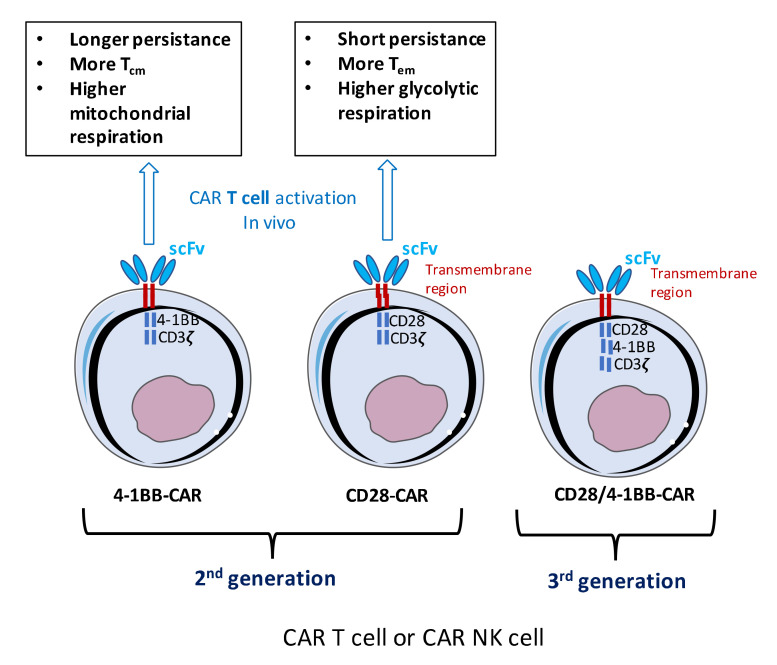Figure 1.
Chimeric antigen receptor (CAR) T cell engineering using different CAR designs and their in vivo persistence. Second-generation CAR T cells containing a CD3 zeta signaling domain, a CD28 or 4-1BB co-stimulatory domain and a scFv that will be displayed at the surface of the T cell for anti-cancer antigen recognition. For the second-generation CARs is indicated their dependence on a metabolic pathway and their persistence in vivo according to the co-stimulatory domain used. The third generation CAR contains 2 co-stimulatory domains.

